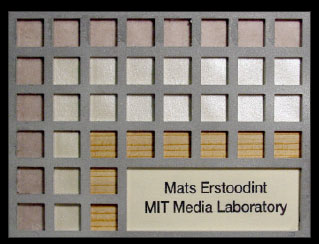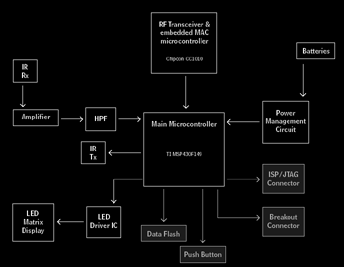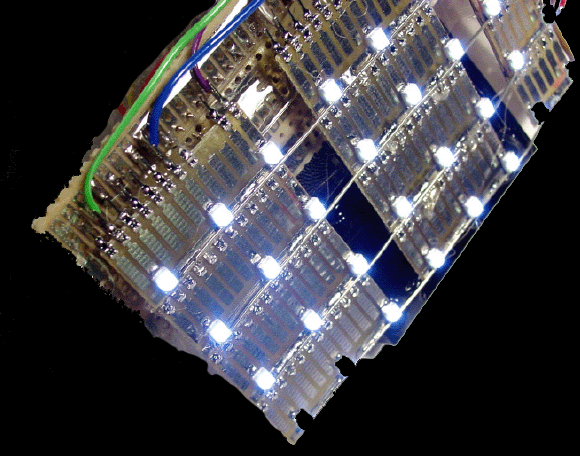The Ubiquitous Experimental Research Badge (UbER-Badge) is a powerful platform for developing new applications in person-person and person-event interaction. This design takes a huge stride beyond the Media Lab’s previously successful badges (e.g., the Meme Tag (1998) and Thinking Tags (1997)). It is highly evolved in both its technological power and its aesthetics.
This Badge is a general computing platform for experimentation with distributed systems and the analysis and enhancment of group social interaction. Although The Badge will be used in crowds of circa 200 people during Media Lab events, it is designed to be open and expandable for future research use, able to encompass essentially any crowd size and a host of possible applications.
Sporting both IR and RF interconnection, the Badge will be used to explore multihop “viral” message passing and paging, gradientbased people locators, and passive accumulation of the interest profile of the wearer.

Badge Face Plate Prototype

Original Badge Block Diagram (see hardware page for latest hardware)
The badge is equipped with a microphone, and has enough non-volatile memory storage to log a substantial amount of activity. The badge is designed as a modular circuit that can easily be augmented with other technologies. This is to enable a wide span of research groups throughout the Media Laboratory and the sponsor community to leverage the badge in their work.
The display of information is done through a low resolution matrix constructed of various textured papers backlit with LEDs and contrasted against a rigid metal frame. The paper forms a skin under the frame that diffuses light and creates a fragile and elegant grid. The display is addressed like any basic monitor, and the IR components are embedded into a cell on the front plate. The display elements can be independently addressed, allowing it to present information as bargraphs, simple alphanumerics, or other dynamic graphical structures.
A case constructed of metal or lightweight plastic encloses the remainder of the hardware and batteries.

Early Badge Prototype
Responsive Environments Group
MIT Media Lab